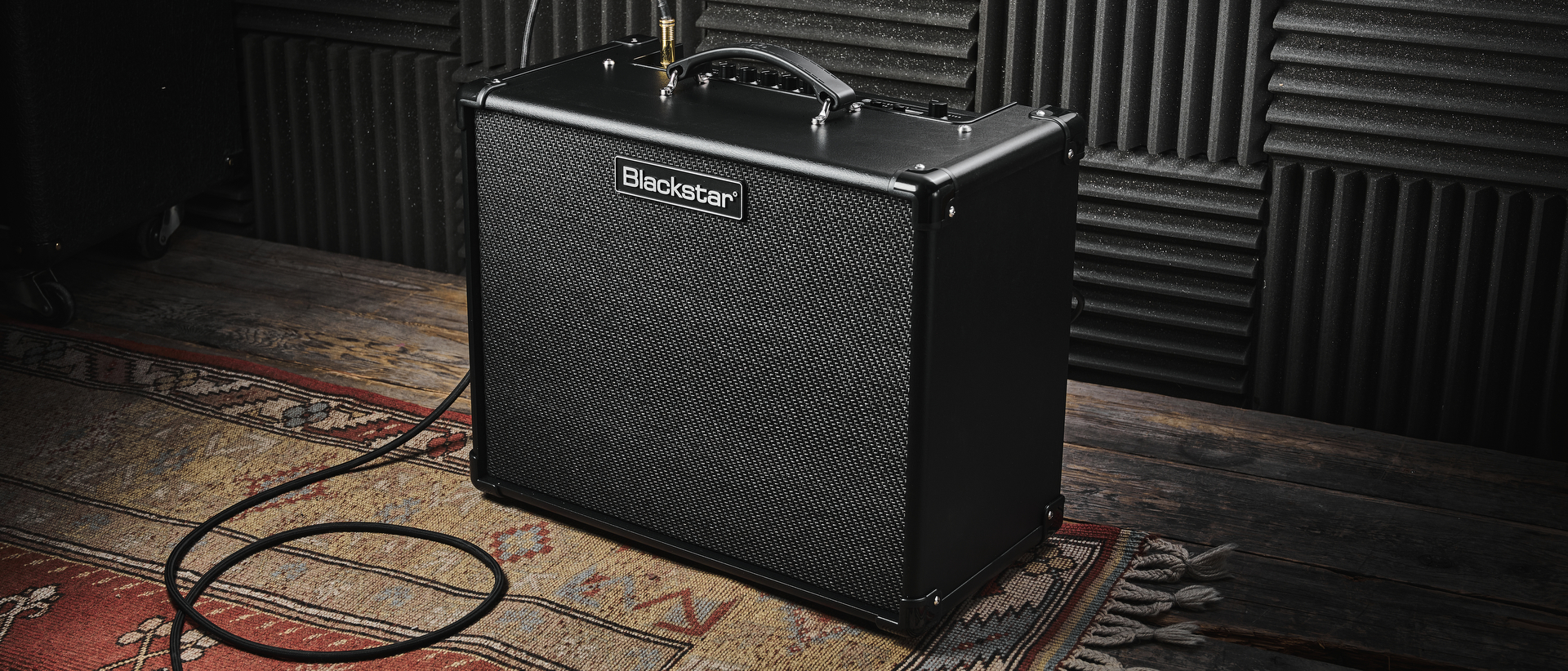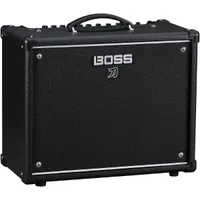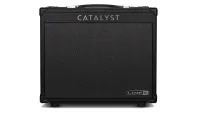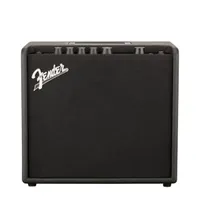Guitar World Verdict
The Katana killer? The jury's still out, and it's a debate that will rage on for some time, but one thing is for sure: this is a really solid modeling amp with some great tones and even better extended features. The competition is steep, but Blackstar may have just done enough to muscle its way to the table alongside the Boss Katana, Line 6 Catalyst and Fender Mustang lineups
Pros
- +
Ace control layout
- +
Solid tones, 6 great amp models
- +
Exceptional clean sounds
- +
Architect desktop software is great
- +
Competitively priced
Cons
- -
No smartphone app for tone tweaking
- -
Footswitch not included
- -
No stereo
You can trust Guitar World
What is it?
It takes a brave soul to take on Boss in the modeling amp arms race, and an even braver one to do so explicitly. After all, the Japanese firm’s Katana range – now on its third iteration, following a mass overhaul last year – is undoubtedly the market’s biggest player, and has comfortably cemented itself as the amp to beat in the near-decade since its release.
Blackstar, however, is one of those very brave souls, and clearly isn’t afraid of the Katana, having launched the ID:X – a modeling amp that its maker admirably and obviously states has been designed to go “head-to-head” with the market leader.
Dubbed “a bold step forward in modern amp design”, the ID:X – available in 50 and 100 watt iterations – is Blackstar’s stake for conquering the modeling amp space, building on the beloved Blackstar ID range and elevating it to all-new heights thanks to newly engineered tech and some proprietary features.
For a cursory overview, these include Blackstar’s CabRig functionality, a companion Architect app, the firm’s Infinite Shape Feature (ISF) control, tube response options, wattage-scaling, loads of presets, expansive connectivity and its new ‘In The Room’ tech.
Of course, it’s not just Boss that Blackstar will be tussling with here. Positive Grid’s Spark and Fender’s Mustang, both equally popular modeling amp alternatives, also have some deep roots in the game, and so it seems the ID:X has its work cut out.
The ambition is clear. Blackstar sees the ID:X as the amp to take the Katana crown, and it’s called in the big guns to do it.
Specs
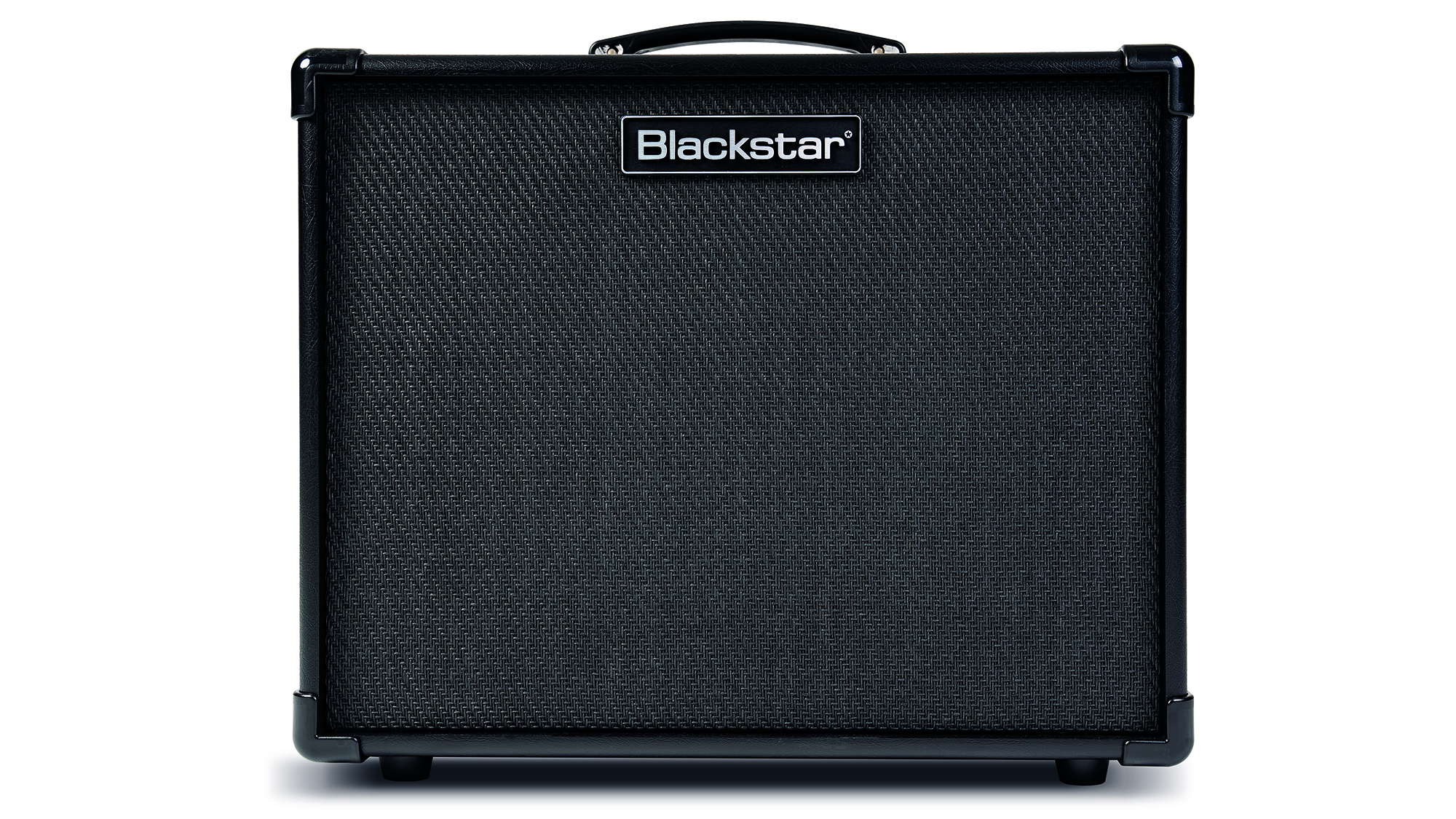
- Launch price: $349.99/£292.99/€349.99
- Type: Modeling combo amp
- Origin: China
- Output: 50 Watts RMS
- Speaker: 1x12", Blackstar Anthem 50
- Channels: Three
- Controls: Amp voice, gain, volume, bass, middle, treble, Infinite Shape Feature (ISF), master volume, 2x multi-function effects knobs, power scaling (1W, 10W, 50W), valve response (EL84/EL34/6L6)
- Connectivity: Inputs, outputs, headphone-out, effects loop emulated out etc.
- Footswitch: FS-12 and FS-18 compatible, not included
- Weight: 18.84 lbs/9kgs
- Dimensions: 470 x 409 x 221 mm
- Contact: Blackstar
Build quality
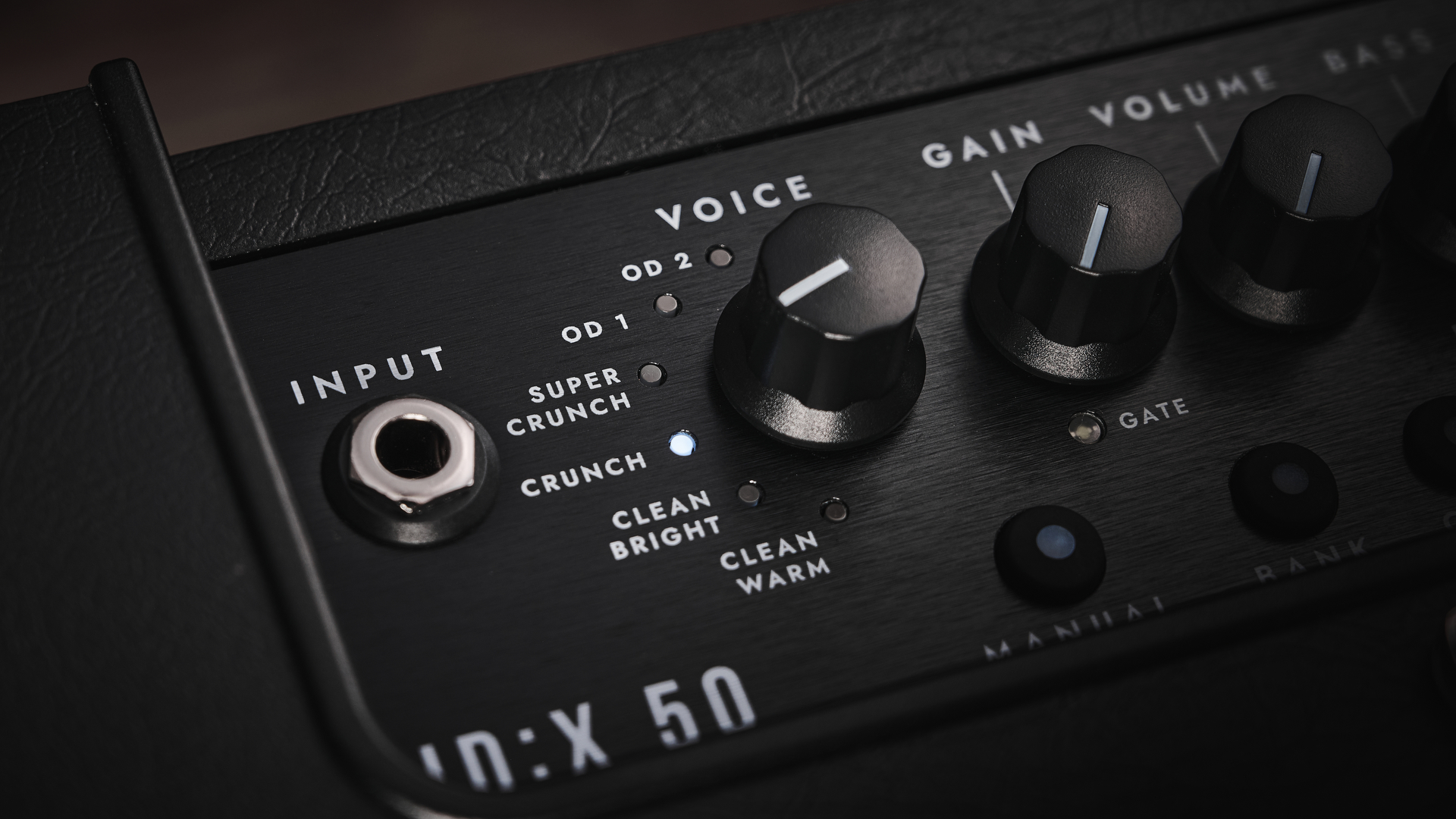
Build quality rating: ★★★★★
All the latest guitar news, interviews, lessons, reviews, deals and more, direct to your inbox!
Anyone who’s played a Blackstar amp knows they’re built to an impeccable standard, and we’re not surprised to see that top-notch quality carried through here to what has now become its premier modeling amp range. Like the ID:Core to come before it, the ID:X has been put together pretty flawlessly as far as we’re concerned.
In terms of sheer presence, the sturdy but lightweight combo flaunts a faux leather design, with a firm carry handle (which might soften up in time) for easy maneuverability. Taking this from one corner of the bedroom to another certainly doesn’t feel like a risky – or cumbersome – move, and I found myself easily carting this around my flat in order to play wherever I felt comfortable. Something I don’t do with my more static amps.
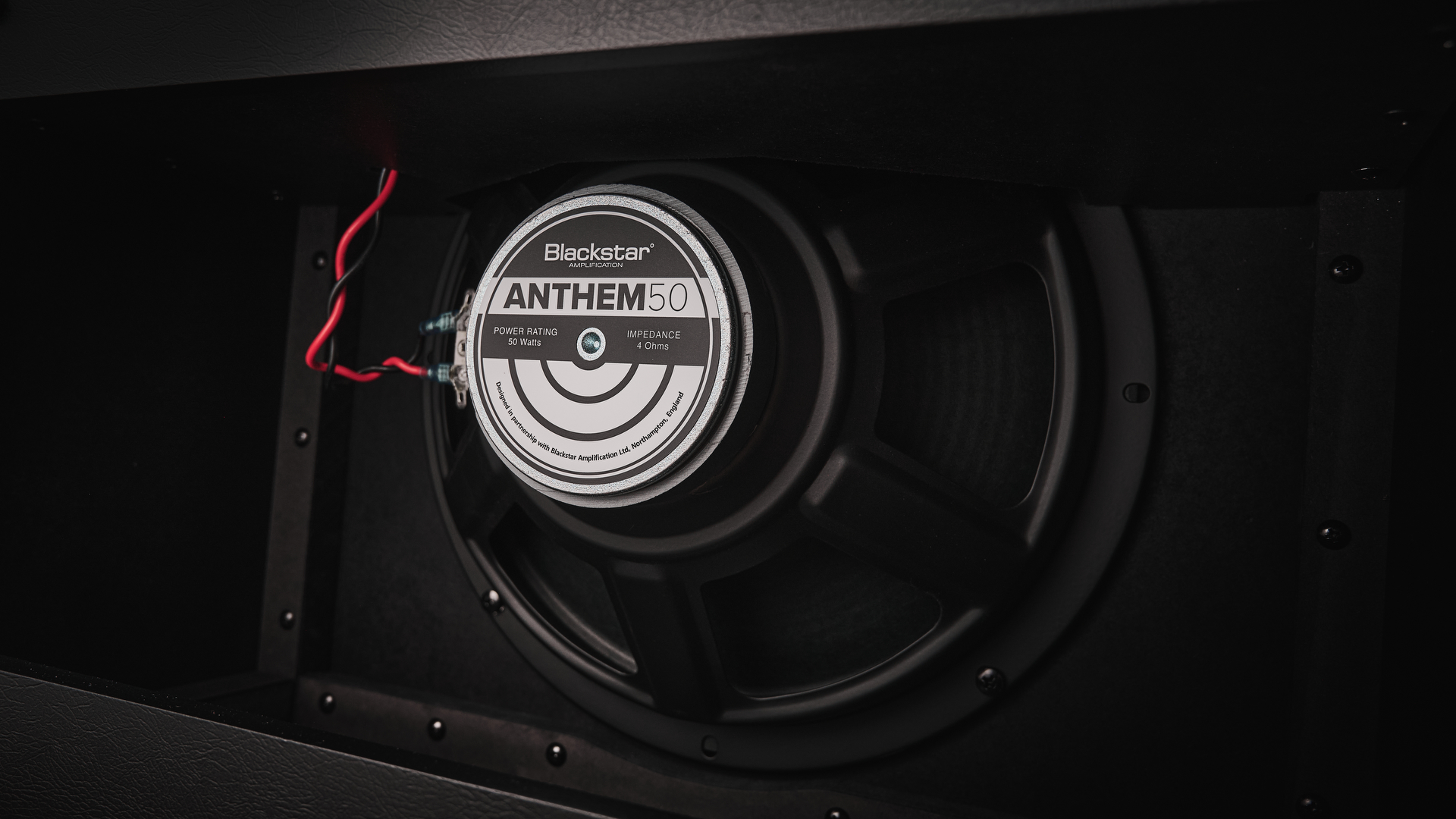
The control panel has been put together with surgical efficiency in mind, with no wasted space or overcrowding. Impressively –– given the amount of effects buttons, parameters, features and control knobs that Blackstar has managed to cram in such a finite space –– it doesn’t really feel like too much, and actually feels mostly intuitive. Worthy of merit, given there’s also a screen present – something the Boss Katana lacks.
If I'm being honest, it kinda looks and feels like a Katana, with a similar construction, weight and design. Of course, everything under the hood means it’s anything but a Katana, but from a build perspective, it feels familiar and sturdy. The open-back design reveals the Blackstar Anthem 50 speaker, which is adjacent to a row of connectivity ins and outs, and is a huge plus: the extra openness to allow the speaker to breathe works wonders for the tone.
Usability
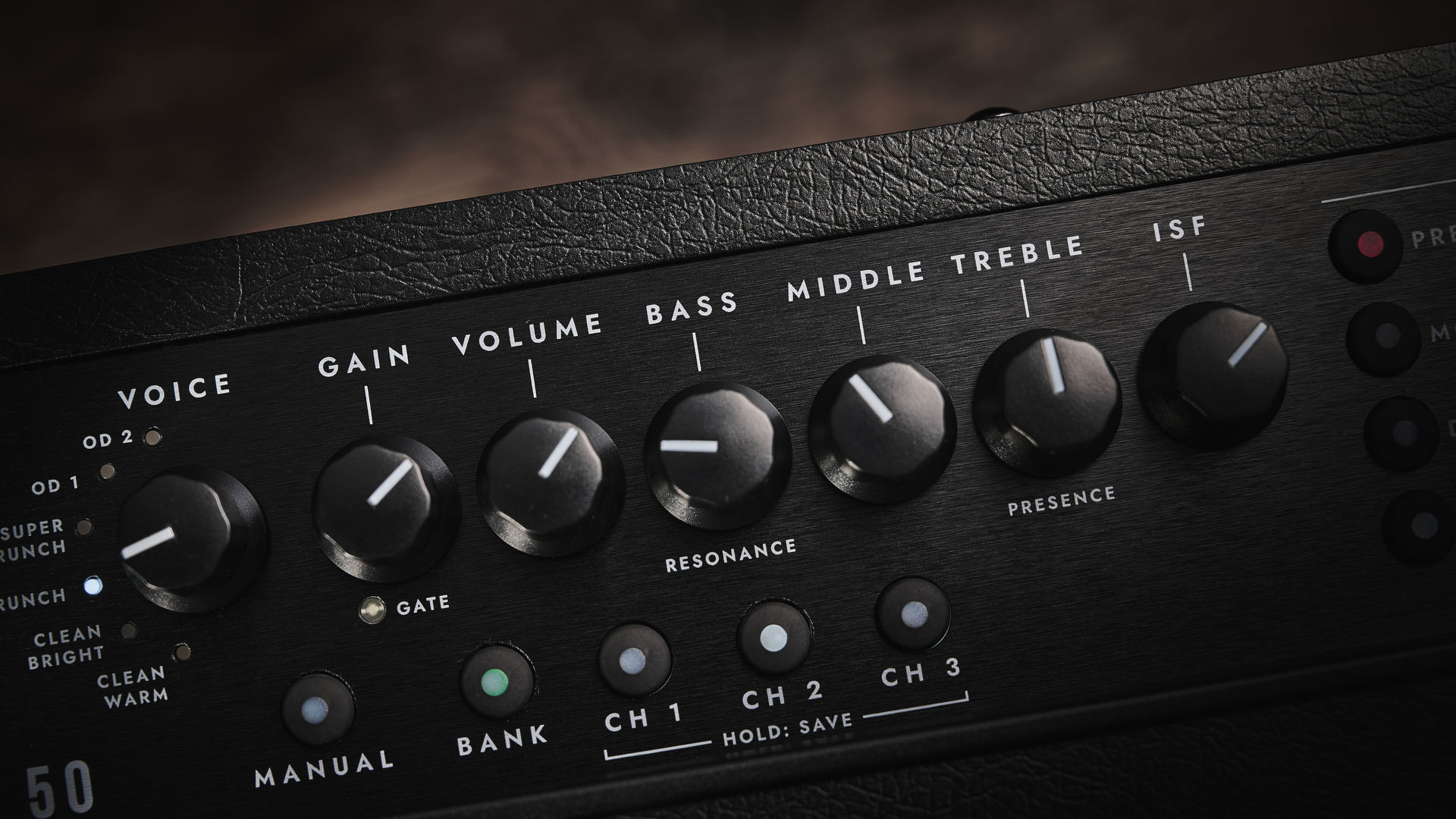
Usability rating: ★★★★½
For the amp itself, perhaps the biggest compliment that can be given is the fact Blackstar has done a tremendous job with organizing the control panel, and has managed to fit in everything you could ever really need in a way that doesn’t feel overcrowded or intimidating. It is the classic ID:Core experience, but better.
Whereas the Katana is something of a control knob spam, the ID:X feels a tad more refined, cleverly utilizing push pots, a screen, some buttons and a streamlined EQ section for what is ultimately a more inviting design and user experience.
The Voice knob makes it easy to switch between any of the six amp types (Clean Warm, Clean Bright, Crunch, Super Crunch, OD 1, OD 2), which can be dialed-in using Gain, Volume, Bass, Middle and Treble controls. There’s also Blackstar’s ISF control – which purportedly moves between British and American amp tones – and a Master output.
I’m particularly impressed with everything that’s been worked-in around those controls, though. The way the effects are laid out is especially clever, with simple buttons to trigger Pre FX, Mods, Delays and Reverbs, and two smaller knobs to alter parameters and move between specific effects. This is so much better than the ‘one-size-fits-all’ approach of the previous ID amps, and a huge step up in terms of usability.
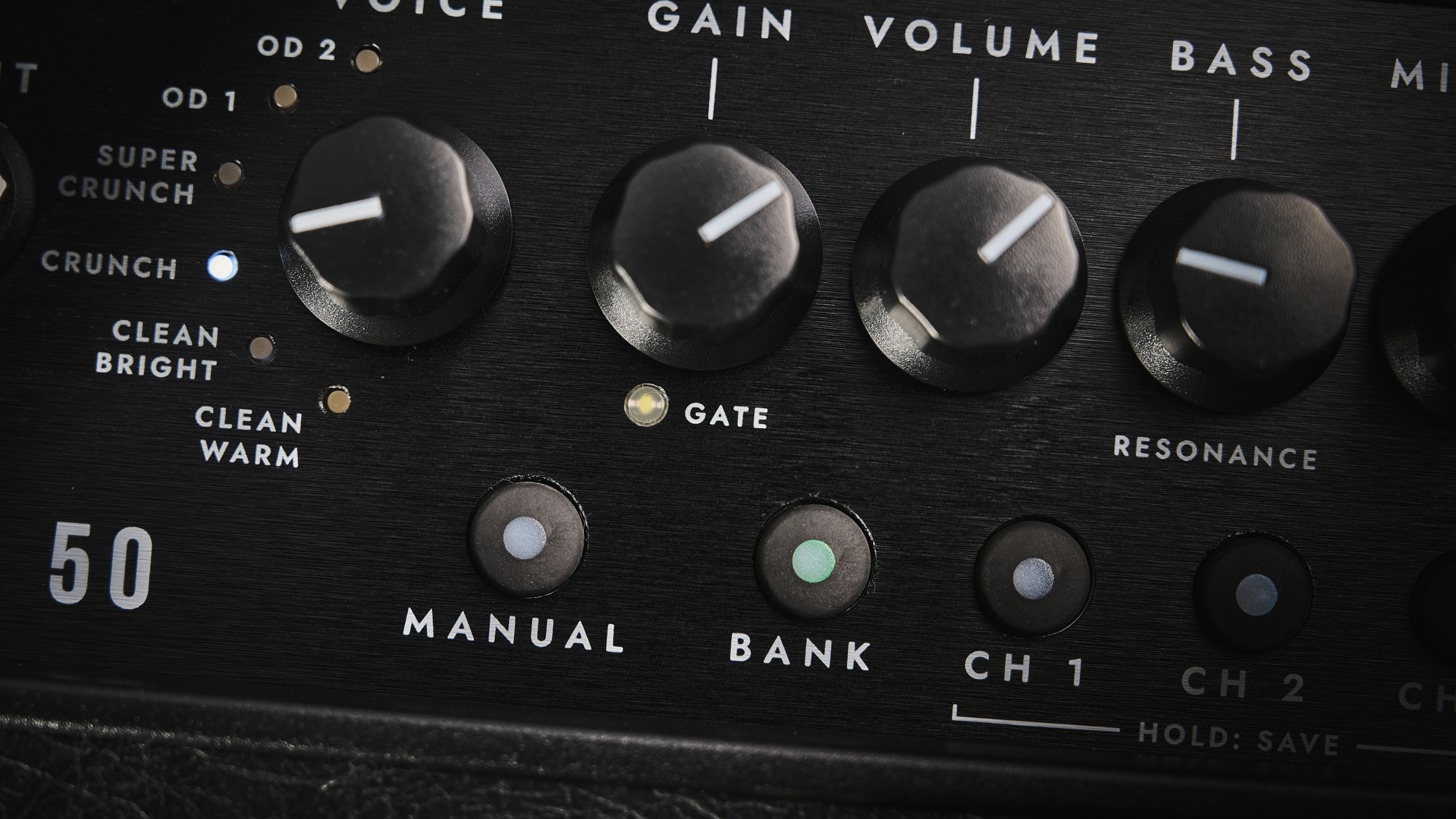
Ultimately, it’s a really nice use of space, and – when paired with a small screen – something I found to be immensely usable. It’s also nice to see the Power and Response buttons – which change between 1W, 10W and 50W, and EL84, EL34 and 6L6 tube voices – on the top of the panel, rather than on the rear of the amp, making them inherently more accessible and thus practical.
Presets can also be accessed thanks to the three Channel buttons and the Bank button, which work together to help bring to life up to 12 separate onboard presets.
And then there’s Blackstar’s Architect software – a companion app for Mac or PC that offers in-depth tonal editing, preset tweaking and bumps up the total number of accessible presets to 99. It also taps into the firm’s tone-sharing community for exploring user-generated patches.
I’ve been brought around to the idea of using apps with my guitar gear after falling in love with the Positive Grid SPARK and Neural DSP Nano Cortex, so using a desktop platform that feels spiritually similar to Line 6's HX Edit feels like an effortless extension.
A smartphone app would be nice at some point, though, especially since the Katana and the Spark can both be operated on the fly using an iPhone. Even if this materialized in the form of a tone-only editing app that forgoes some of the Architect’s more complex features, it would make casual deep-editing vastly more accessible.
There are a few other shortcomings, too. There’s no stereo functionality, despite the implementation of the CabRig tech. It seems to be a strange oversight, especially since older ID models offered stereo effects loops. Heck, even the ID:Core V4 offered “Super Wide Stereo”. A missed opportunity, it seems.
Sounds
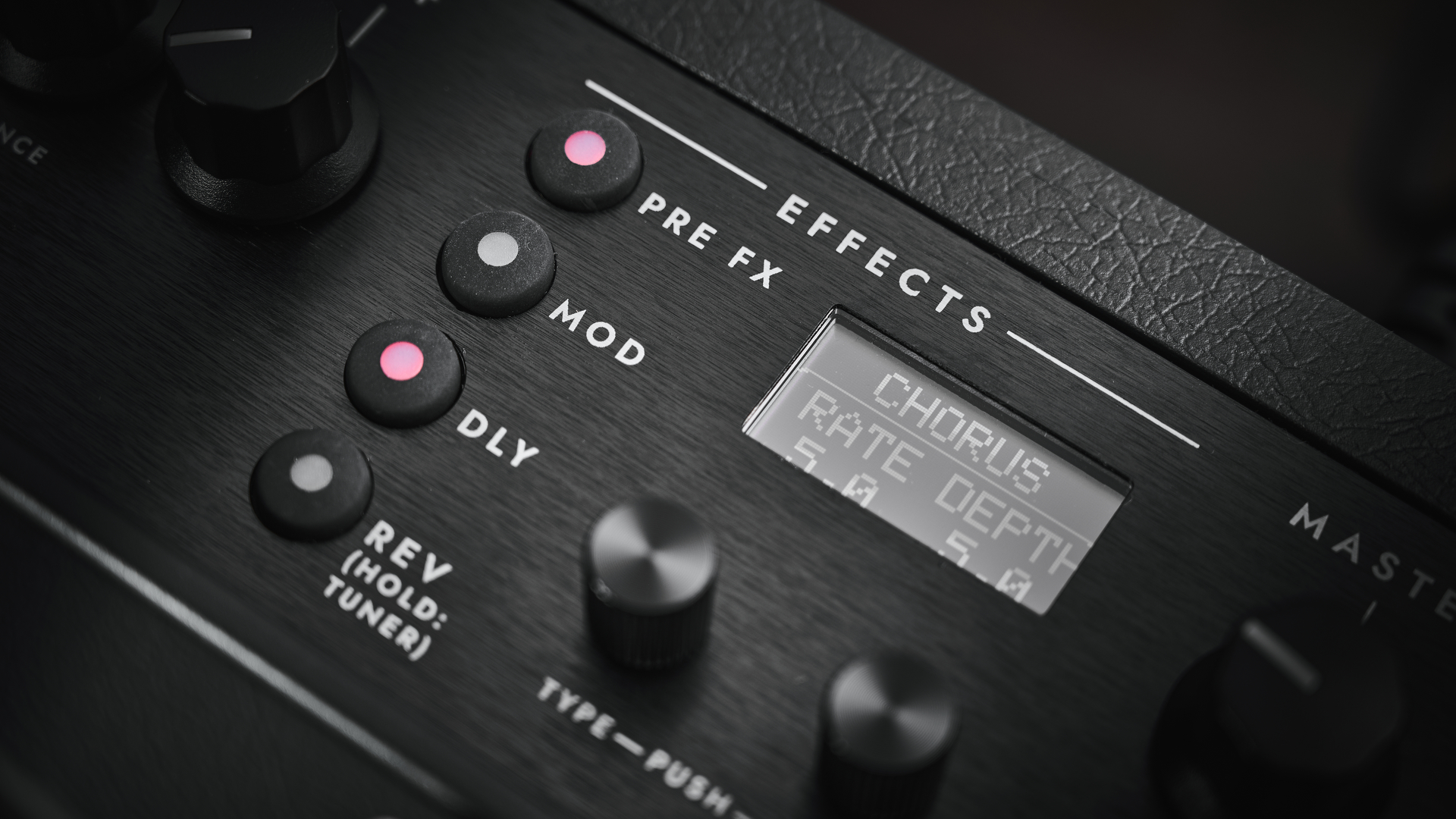
Sounds rating: ★★★★½
At the end of the day, an amp is only as good as the tones it offers. It can have all the bells and whistles in the world, but if it doesn’t sound good – or if it doesn’t inspire you to plug in, play and explore new sounds – it’s a dud. Not that it was ever in any doubt, but the Blackstar ID:X sounds pretty darn good indeed.
The firm has been on a notable roll over the past few years, with the ID:Core V4 receiving rave reviews and its St James range of lightweight tube amps – which bowled me over with how good it was when I played a last-minute gig with one – offering some seriously great tones and feel.
The ID:X is a continuation of that, with a bunch of practical presets, six solid amp models and a load of top-rate effects to boot. I have no qualms with any of the reverbs, delays or modulations – of which there is a healthy variety – and was particularly impressed with the Pre-FX.
Thankfully, some sought-after, classic overdrive pedal gems are included in the list – the Klon-inspired K Drive, Marshall Bluesbreaker-based Blue Drive and the TS Drive, which is inspired by the Ibanez Tube Screamer circuit – as well as some more out-there additions. I was less convinced by the more high-gain effects on tap – the fuzzes in particular – but this is usually a sticking point for most modeling firms.
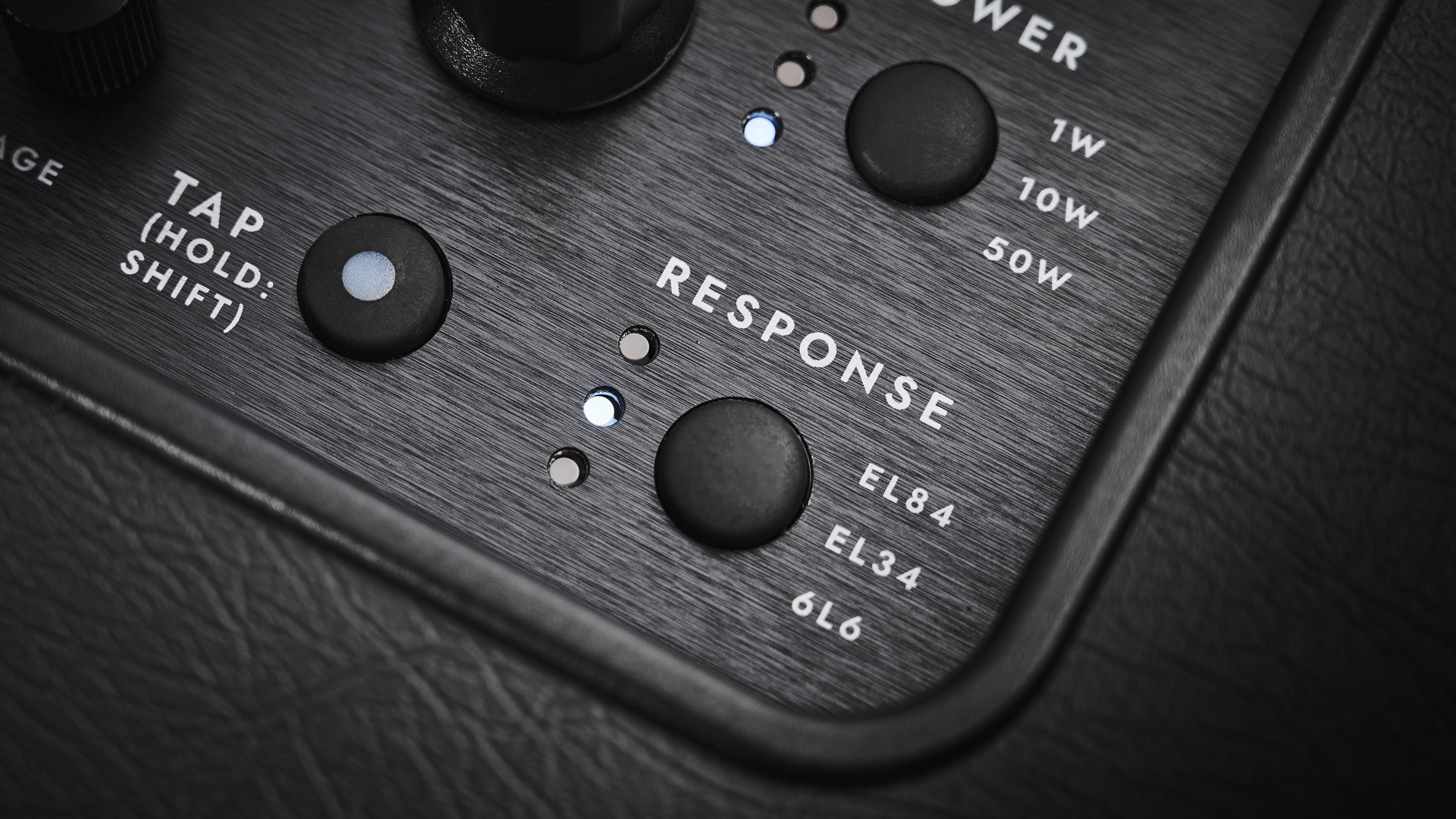
With all that said, the cleans were pretty flawless, as were the edge-of-breakup tones, and I found the ID:X to be a great pedalboard platform for my current rig.
Does the Blackstar have the edge over the HX-powered effects of the Line 6 Catalyst, or the Boss Tone Studio of the Katana? Hard to say without a direct A/B test, and the competition is fierce, but the early signs are promising.
I also found the ISF control – something I’ve admittedly been skeptical about in the past – to be an effective tone-tweaking addition, though I wouldn’t deem it a dealbreaker. I’d recommend finding a middle-ground that suits your tonal preferences and leaving it there: that’s exactly what I ended up doing.
Similarly, the Response mode options are a nice touch, but for many players it might be unnecessary. I’m very much from a 6L6 school of thought, so apart from the sake of review purposes, I rarely branched out to the other options. Not to say they don’t sound effective, though, they do, and I certainly won’t hold it against the ID:X for going above and beyond to expand the scope of available tones.
But hey, the option is there and it's effective: if you wanted to hop from a Marshall-esque, British-sounding EL34-style amp to a Fender-inspired, US-inclined 6L6, those tones are all on offer here. Throw in the litany of effects – further expanded by the Architect software – and you’ve got a generous bunch of very usable sounds.
Verdict
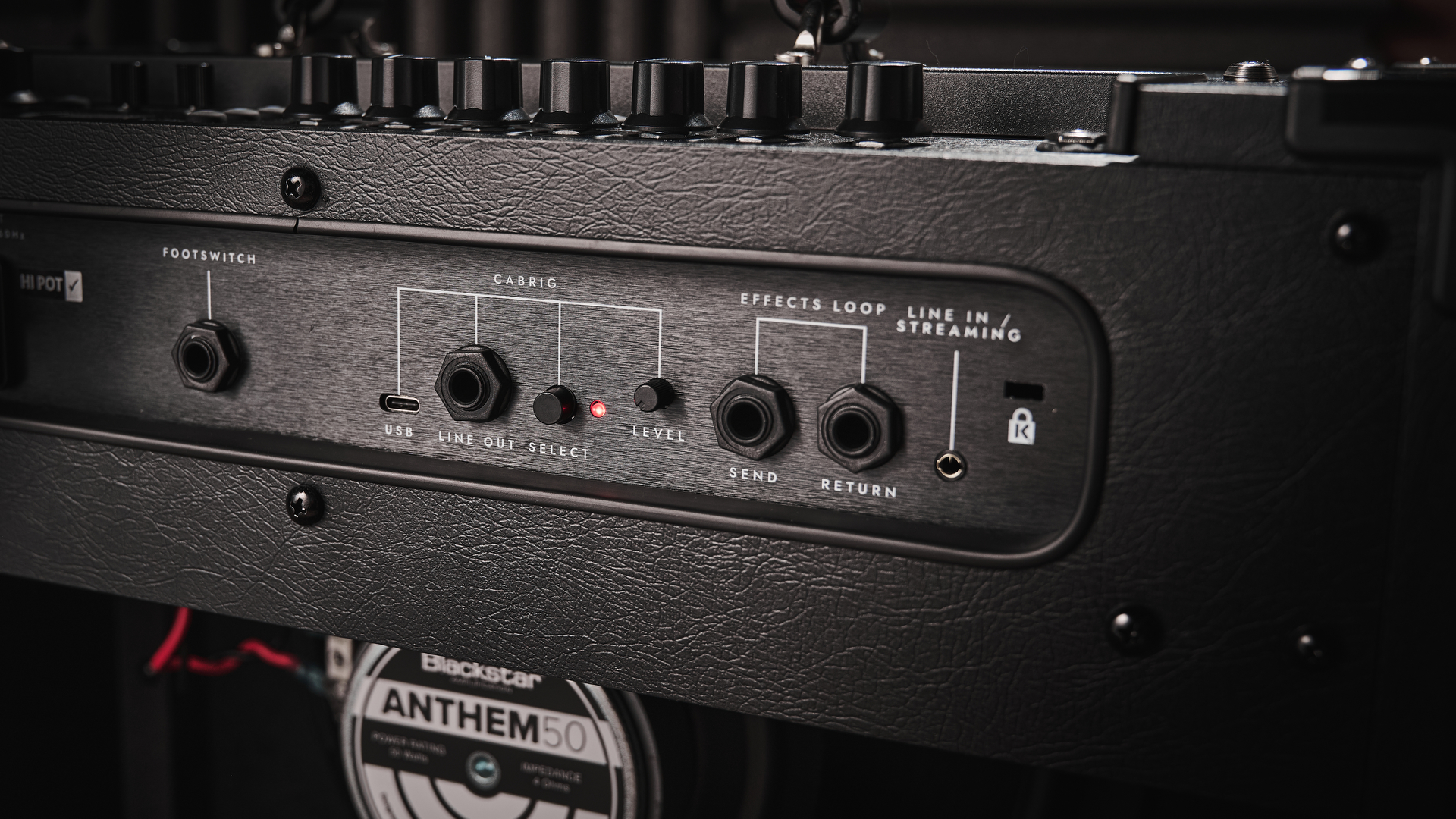
A Katana killer? A Catalyst clipper? As is the case with all guitar gear, the answer to that will be entirely subjective and down to player preferences, but one thing is abundantly clear: the ID:X is a commendable rival to the more established high-end modeling amps.
It is, in its own right, an excellent and competitively priced modeling amp that will no doubt be the right tool for many players
From a design perspective, the overhauled control panel is subtle but effective and lends itself to a genuinely intuitive and inspiring playing experience. The tones are up to scratch, the extended features are impressive – especially CabRig – and it’s well positioned as an at-home amp that can cater to bedroom practice, recording and small gigs.
In the end, the discourse surrounding whether the ID:X can take the Katana’s crown seems redundant. It is, in its own right, an excellent and competitively priced modeling amp that will no doubt be the right tool for many players.
Guitar World verdict: The Katana killer? The jury's still out, but one thing is for sure: this is a really solid modeling amp with some great tones and even better extended features. The competition is steep, but Blackstar has done enough to muscle its way to the table alongside the Boss Katana, Line 6 Catalyst and Fender Mustang lineups.
Test | Results | Score |
|---|---|---|
Build quality | Feels like it would survive being thrown out of a moving vehicle (don't try that) | ★★★★★ |
Usability | Great control panel layout, not overcrowded, Architect software is exceptional | ★★★★½ |
Sounds | Fantastic cleans, great gain tones, effects largely very good | ★★★★½ |
Overall | A great modelling amp that I found to be particularly inspired to play | ★★★★½ |
Also try
Boss Katana 50 Gen 3 $349/£259/€373
The behemoth that the ID:X is going up against. Similarly priced and similarly spec’d with loads of usable tones and extended features. The market leader for a reason.
Read more: Boss Katana Gen 3 review
Line 6 Catalyst CX 60 $299/£199/€285
A dark horse in the modeling amp sphere, this has slightly more power (60W) and is a touch more expensive but seriously impressed us when we took it for a test drive.
Read more: Line 6 Catalyst CX 60 review
Fender Mustang LT25 $170/£159/€179
Fender’s own digital modeling amp range should be considered in the race. The 25W LT25 has some great tones and Fender charm, with an infectious frills-free playing experience. Again, really impressed us when we got our hands on it – we think it’s the best budget modeling amp.
Read more: Fender Mustang LT25 review
Hands-on videos
Peach Guitars
Blackstar
GuitarGuitar

Matt is the GuitarWorld.com News Editor, and has been writing and editing for the site for five years. He has a Masters in the guitar, a degree in history, and has spent the last 19 years playing everything from blues and jazz to indie and pop. During his GW career, he’s interviewed Peter Frampton, Zakk Wylde, Tosin Abasi, Matteo Mancuso and more, and has profiled the CEOs of Guitar Center and Fender.
When he’s not combining his passion for writing and music during his day job, Matt performs with indie rock duo Esme Emerson, and has previously opened for the likes of Ed Sheeran, Keane, Japanese House and Good Neighbours.
You must confirm your public display name before commenting
Please logout and then login again, you will then be prompted to enter your display name.
